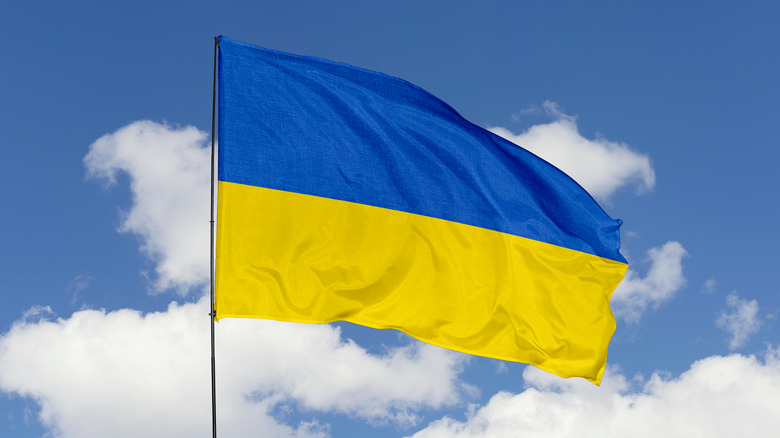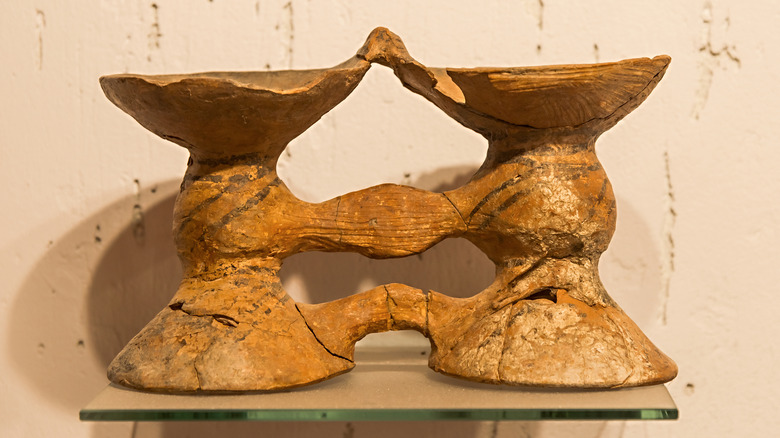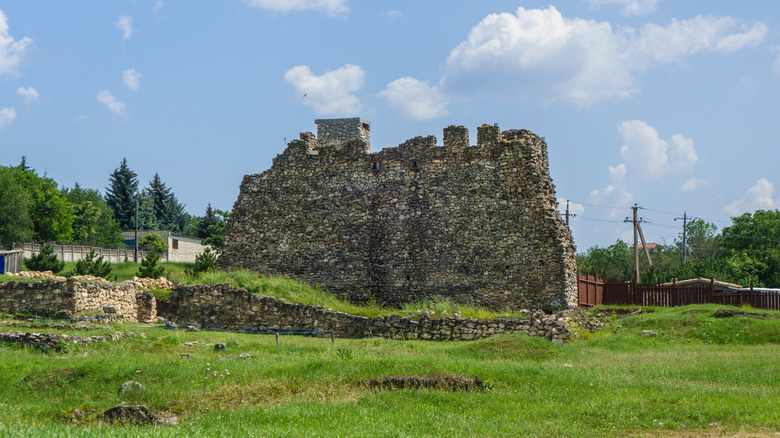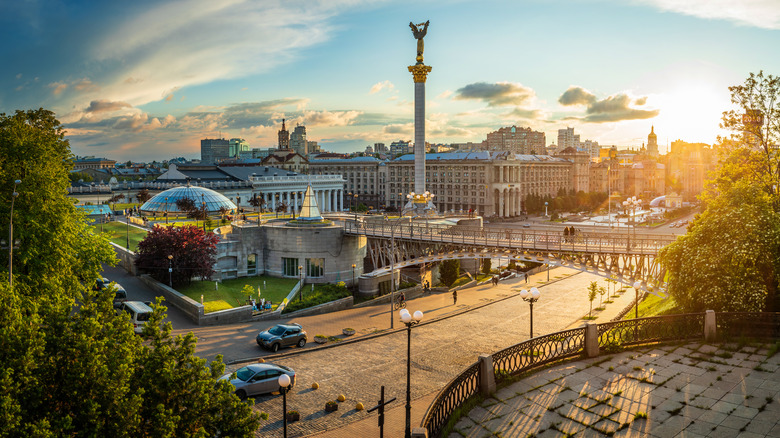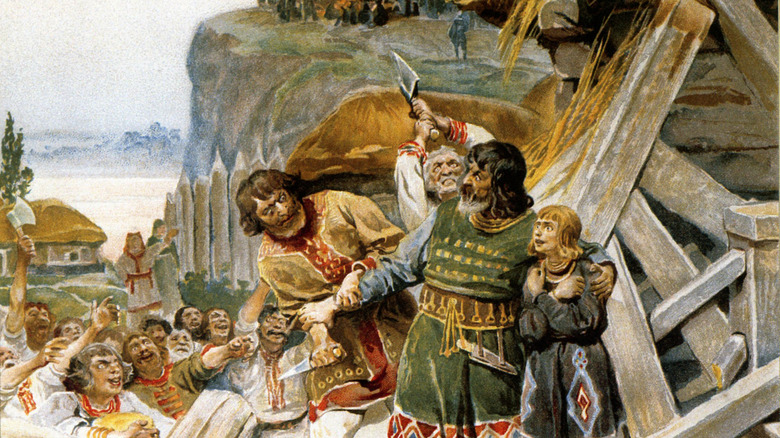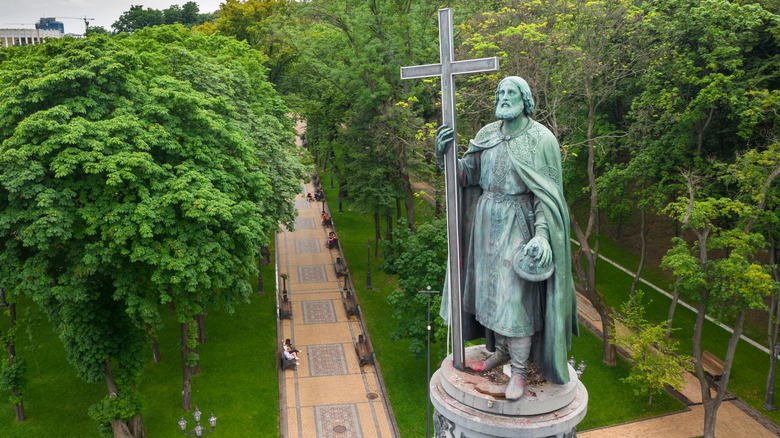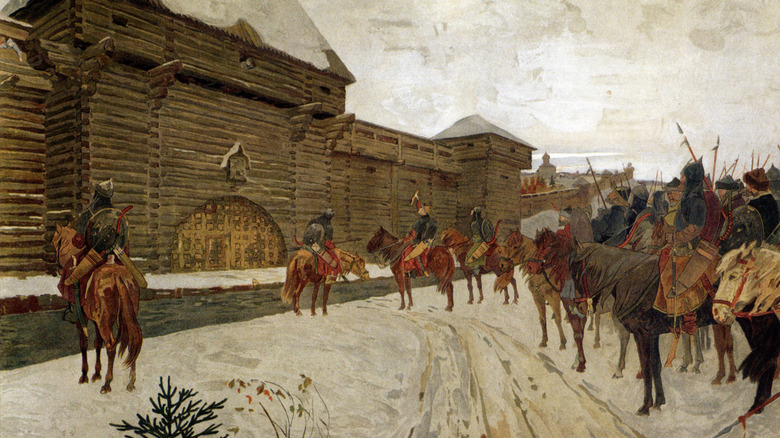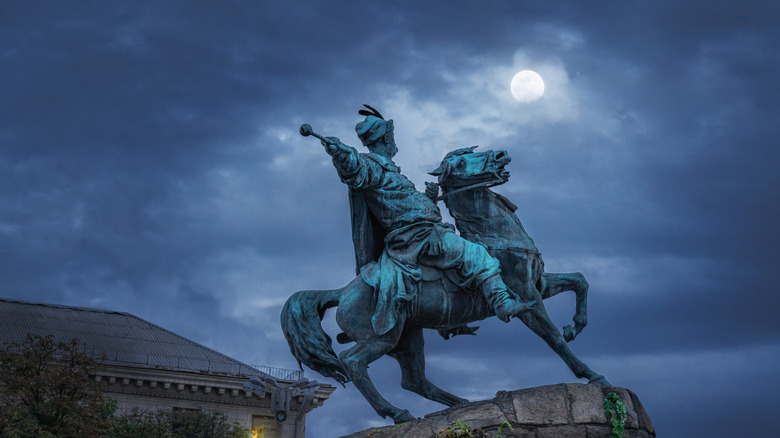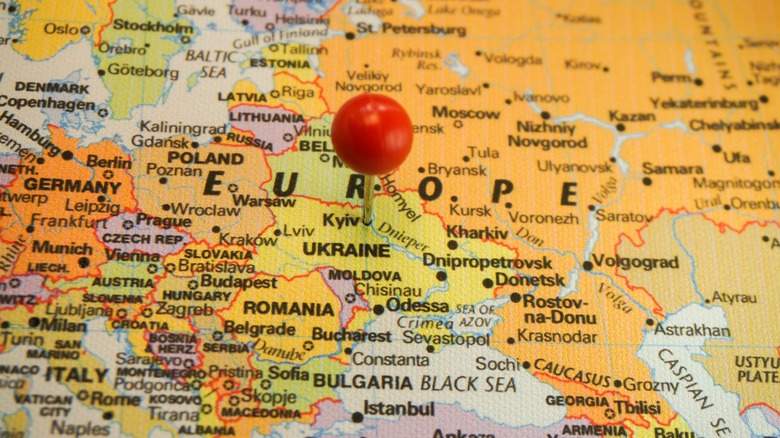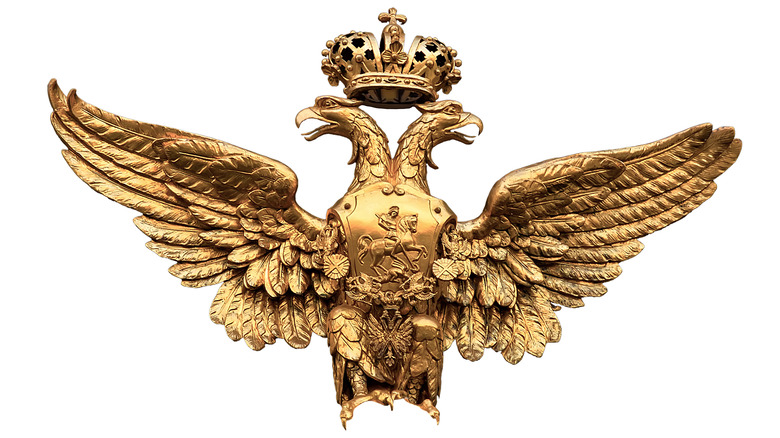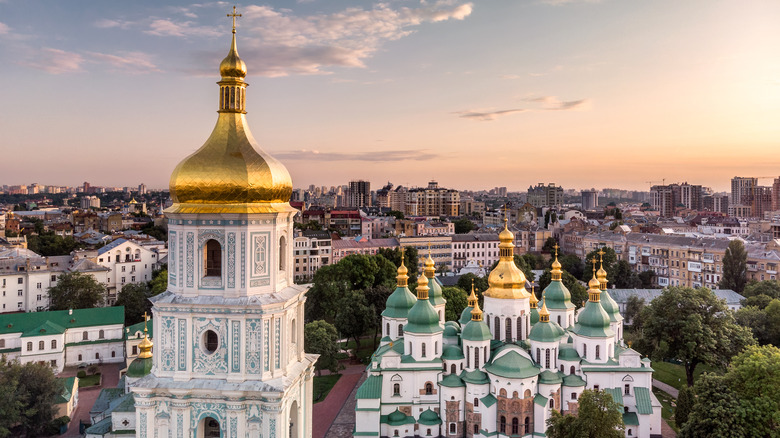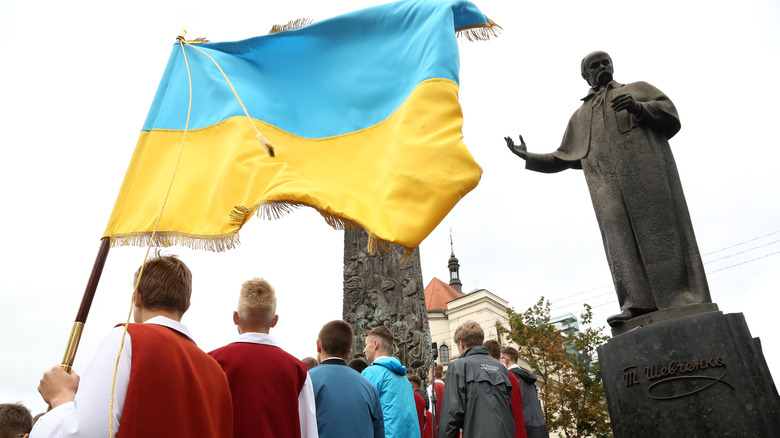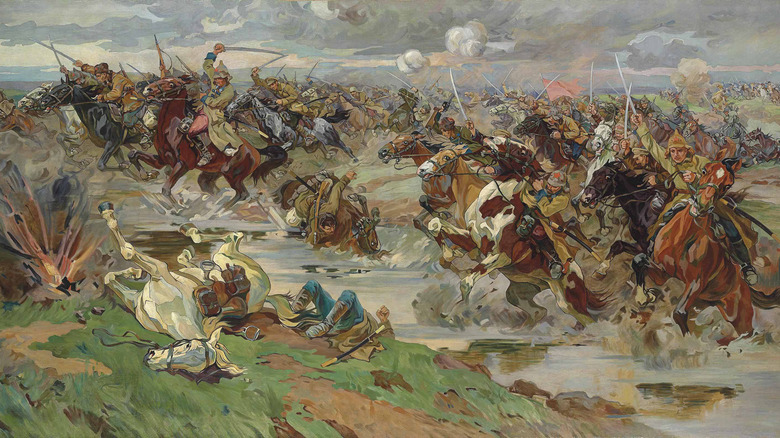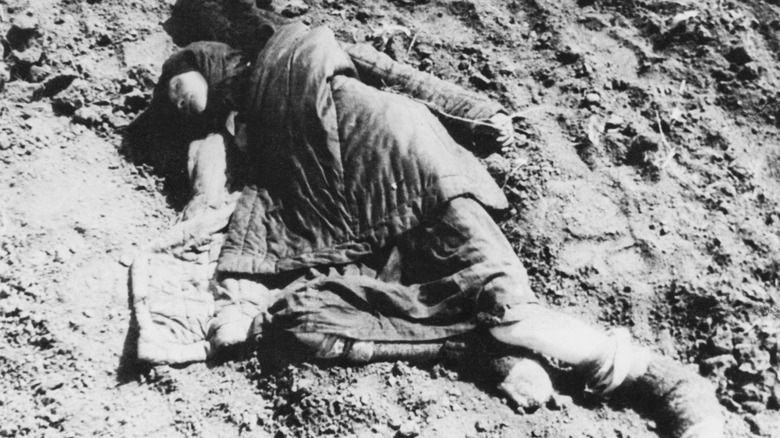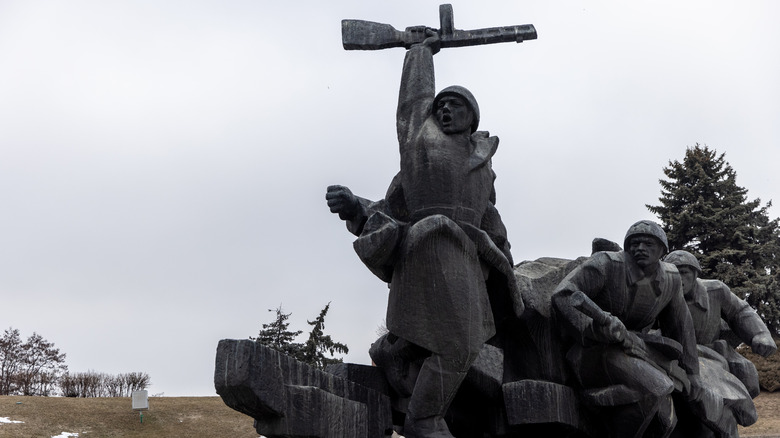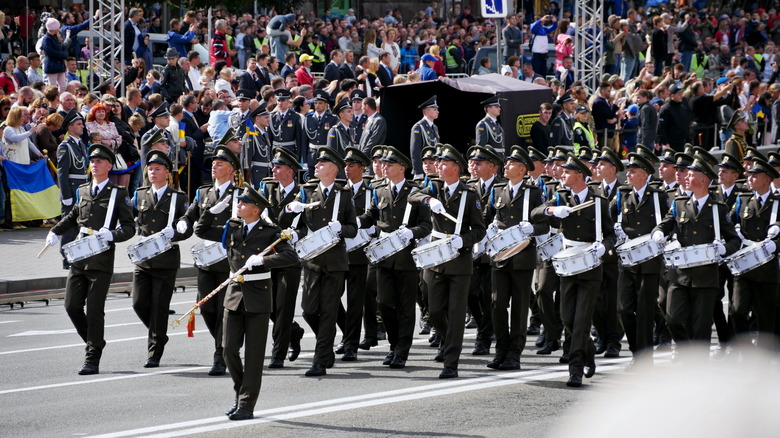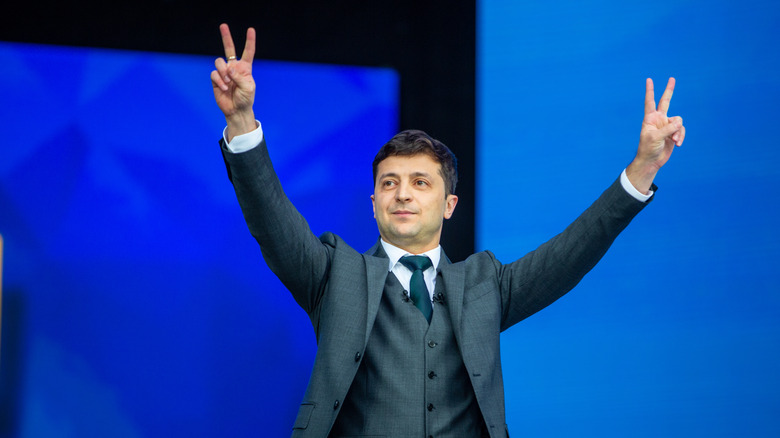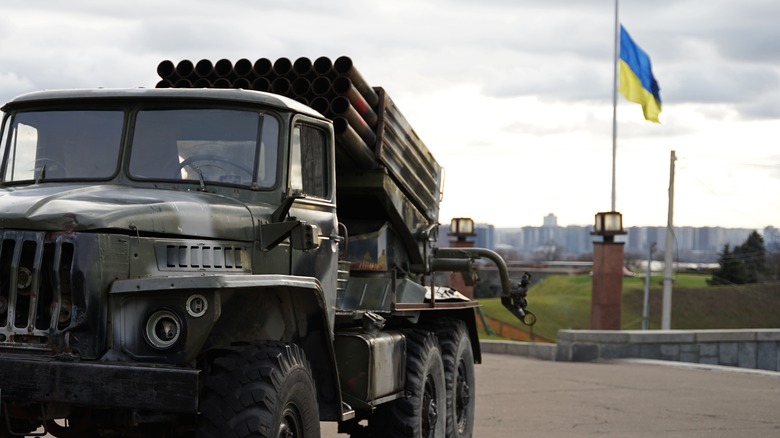The History Of Ukraine Explained
Ukraine's rich and turbulent history is unknown to most people. There are three themes when considering Ukraine's history. First, it is full of struggles and violence. Even a brief glance at Britannica's coverage of Ukraine shows that the region has been at the nexus of conflict since ancient times. From the Scythians to the Vikings to the Cossacks to invading Russian armies, Ukraine has been a contested area for a very long time.
The second theme is that these factors have created a unique history which endowed a national identity to Ukraine that probably wouldn't have existed had it not experienced such turmoil. It seems that those who attempted to control Ukraine, in fact, made the Ukrainians who they are.
Third, Ukraine's history is one of the most complex out there, involving hundreds of exotic-sounding kings, numerous countries, high-power politics, and repeated tragedies. But the key to understanding Ukraine, and in particular its central importance in the politics of Eastern Europe and Russia, is to learn its history. Indeed, to understand Ukraine's present and future, you must also know its past since it is indelibly linked.
Ukraine's history is based on three geographic zones
The region that was to become Ukraine is divided into three zones. Each of these regions were heavily influenced by its geography, which allowed for a unique blending of cultures. As Britannica describes, the Black Sea coast was heavily influenced by Mediterranean peoples, then in the east, the land opened into steppe, which has proven from ancient times to be an avenue of conquest. The third zone, western Ukraine, was a mix of steppeland and forest. This area proved suited for the development of agriculture.
It was in Ukraine's western regions that one of the earliest civilizations developed. The BBC reports that starting around 7,000 years ago, a civilization dubbed Cucuteni-Trypillia developed a large urbanized civilization at multiple sites. Some estimate that the civilization may have had about a million people. This civilization had all the hallmarks of advanced states of the early ancient world: agriculture, pottery, and complex religious beliefs. It is the pottery that is most striking to archaeologists, who have discovered numerous examples of brilliant colors and complex patterns. Still, not much is known about this enigmatic civilization, such as how it governed itself. After eight centuries, the Cucuteni-Trypillia mysteriously disappeared. Scholars are trying to figure out why.
Ancient Ukraine was home to the Greeks and Scythians
Ukraine made its first foray into written history with the Greeks and the Scythians. By around the year 1000 B.C., overpopulation in Greece resulted in the establishment of Greek colonies far throughout the Mediterranean. Some intrepid Hellenes, according to "Ukraine: A History," established colonies in the seventh and sixth centuries B.C. along the northern shore of the Black Sea. Within a few centuries, these colonies were thriving, of which the city of Olbia proved the wealthiest from the grain trade. Other important cities were located in today's Crimea.
The Greeks of Ukraine had established relations with the Scythians who lived inland to the north. These nomadic people, as told by the World History Encyclopedia, ranged from Central Asia to Eastern Europe and dominated the steppe as horse warriors. The two cultures had built up a stable, if somewhat antagonistic, relationship based on trade. The Scythians disappeared from the world scene in the third century B.C. after being displaced by other groups. As for the Greek cities, they were subsumed by the Roman Empire and continued to be prosperous for centuries after.
The early medieval period saw great disruptions in Ukraine
The classical period of Ukraine's history came to an end in roughly 200 A.D. Britannica explains that the migration of various peoples — first the Goths, then the Huns, then later the Bulgars — severely disrupted the region, bringing displacement, warfare, and death. The land changed hands several times until a large portion of Ukraine came under the control of Turkic peoples.
It was in the midst of this turbulent epoch that Slavic tribes migrated out of their homeland north of the Carpathian Mountains. One group, the East Slavs, moved into today's Belarus and northern-central Ukraine. The Slavs, who were agriculturalists, founded the city of Kyiv (also called Kiev) on the banks of the Dnieper River in the late fifth or early sixth century A.D. The Encyclopedia of Ukraine describes how the city may have been founded by three Polianian Slavic brothers. It became the centerpiece of commerce and culture of the region, and it became, historically, the most important city of Ukraine.
The Vikings established Kyivan Rus
Ukraine reached a new epoch in the 800s A.D. thanks to a Norse group known as the Varangians. The World History Encyclopedia explains how Vikings either migrated into — or were possibly invited into — the region by the Slavs. The story, which may be mostly fable, is that the Slavs were subject to excessive domination by the Turkic Khazars as well as the Varangians. After initially ridding themselves of the Varangians they found governing themselves too chaotic. Meanwhile, the Khazars were exacting even more tribute. Figuring life was better under the Vikings, the Slavs invited a group of Varangians called the Rus, to come and rule them. The first of these notable rulers was Rurik, who established a dynasty in his name that lasted seven centuries. Whether this story is true or not, the Norse people did, in fact, take the rulership of not only the lands of Ukraine, but also Belarus and sections of Russia. Their federation, known to contemporaries as the Land of the Rus, is what historians refer to as Kyivan (Kievan) Rus.
Kyivan Rus thrived due to its control of commerce. As explained by Britannica the Varangian rulers oversaw a collection of principalities that wasn't particularly centralized. As time went on, the rulers of Kyivan Rus adopted Slavic culture as their own.
Much of Kyivan Rus' history is lore
Much of what we know about Kyivan Rus comes from the "Russian Primary Chronicle" which has been highly critiqued by historians. The trouble is — as noted by the World History Encyclopedia – its tendency to conflate fable and fact. Truth and tall tales flow freely in the work, and it has been a knot historians have been working to untangle since the 19th century. With that said, many events from the work have been corroborated through archaeological records or other sources. In this way, the history of Kyivan Rus is pieced together through stories of murderous royalty mixed with deeds of sorcery.
However, historians do agree that Kyivan Rus reached its peak under Vladimir I, also called, per Britannica, Volodymyr Sviatoslavych, which means Saint Vladimir or Vladimir the Great. Born around 956, he was the Grand Prince of Kiev until 1015. Vladimir was known for his military conquests which consolidated and expanded his realm. He was also known for his conversion to Orthodox Christianity. When Basil II, the Byzantine Emperor, asked for the assistance of Vladimir, the Grand Prince asked for Basil's sister to be wedded to him. Basil agreed (not sure about his sister) with the condition that Vladimir convert to Chrisitanity. This Vladimir did. He then sent warriors to Constantinople who founded the famous Varangian guard.
Ukraine came under Mongol Rule
Kyivan Rus splintered due to power struggles and foreign wars. The World History Encyclopedia describes how by the 13th century, the federation had very little unity. This left it open to conquest by the Mongols, who were also called the Tatars. Starting in the 1220s, Britannica tells us that Mongols invaded, which culminated with the sack of Kyiv in 1240. This group became known to history as the Golden Horde, which was the westernmost Khanate of the huge Mongolian Empire.
They managed to hold onto their eastern European holdings for a little over a century before internal fighting and decline weakened them enough to be overthrown. This was dramatically done by the Lithuanians in 1362 at the Battle of Blue Waters, who defeated the Golden Horde and then went to conquer Kyiv. While the Golden Horde had a brief renaissance in the ensuing decades, it went into steeper decline, breaking into several khanates. It lingered on until the late 15th century. In the meantime, the Grand Duchy of Lithuania — and then Poland — took over Ukraine.
The 15th century saw the rise of the Cossacks
During a seemingly endless period of turmoil, the Cossacks emerged. The name of the Cossacks, according the Encyclopedia of Ukraine, is from a Turkish term meaning "free man." This term came to be applied to a variety of different horse warriors who lived from Russia to Ukraine. The specific Cossacks of Ukraine, as told by Britannica, emerged on the steppes of southern Ukraine in the 15th century. These people grew as peasants fled to them who sought escape from serfdom, as well as others who left society, including nobility. Quasi-democratic, they elected officers and chiefs and lived in an armed camp near the lower reaches of the Dnieper.
The Cossacks proved to be an important ally against the Mongols, but the Polish state and the Russians of Moscow viewed them as dangerous and unstable. Eventually, uprisings led by the Cossack Bohdan Khmelnytsky led to revolution in which he envisioned Ukraine as an independent country of Cossacks. This was the first time that Ukraine was looked at as an independent entity. He made a deal with Russia, recognizing the hegemony of the Tsar for support while at the same time gaining assurances of autonomy. This deal would later be a justification for the Russian Empire to take control of Ukraine. All the same, the Cossacks of Ukraine were at the forefront of the independence movement of that country.
Ukraine shifted hands many times
National Geographic relates how two Ukraines emerged from the Cossack wars. Britannica tells us that the final settlement came in 1667 at the Truce of Andrusovo which ended the fight between Russia and Poland for Ukraine. The land east of the Dnieper became known as the "Left Bank" — the river flows from north to south. The lands to the west became known as the "Right Bank." This in effect created a divide throughout the rest of Ukraine's history. The Left Bank of Ukraine was, on the whole, more Russian-centered than the Right Bank, which looked more to the countries and cultures in central and western Europe.
Subsequently, attempts were made, but failed in one way or another, to establish a lasting sovereign Ukraine. At one point, the Ukrainian rulers even invited the Ottomans to intervene in order to create a unified Ukraine under the vassalage of that empire, since Russian and Polish hegemony was so undesirable. This was a clear sign that Ukraine and the lands about it had become pieces of an empire for the various powers of Europe to squabble over. But to imperial eyes, there were good reasons for wanting Ukraine. As History describes, Ukraine was one of the largest producers of wheat in Europe as well as a major supplier of raw materials such as iron and coal.
Russia took direct control of most of Ukraine in the 18th century
The dislocation and devastation in Ukraine was considerable. In the Right Bank, bands of disaffected peasants roamed the countryside while Polish landholders dominated the lands. Not all was well with Poland itself, either. But any hopes for an independent Ukraine that could break away from Poland were dashed in the 18th century. As the power of empires like Prussia, Russia, and Austria grew, they eyed the weaker states next them and started to gobble them up.
The most impactful of these imperial moves was, as explained by Britannica, the partition of Poland. In 1772, 1793, and 1795, Russia, Austria, and Prussia whittled down this large kingdom between themselves until it ceased to exist. It was in this way that the very western portion of Ukraine, called Galicia, fell into the dominion of the Hapsburgs of Austria, while essentially the rest of the country fell under the hegemony of the Tsars of Russia. The Tsars then wasted no time in trying to remove any vestige of autonomy within Ukraine.
Imperial Russia tried to erase Ukrainian identity
The story of Ukraine under Imperial Russia was one of coerced acculturation. National Geographic tells us that the Tsars followed a deliberate policy of Russification, that is trying to force the Ukrainians to become Russian. The country was treated administratively as a province called (according to Britannica) a "guberniya" which was run by governors appointed by the imperial court in St. Petersburg.
To give an idea of how the Russian government thought of Ukraine, it was referred to as the Ukraine. This, as reported by Time, is thought to translate to "the borderland." By using "the," Ukraine becomes less a nation and more of a geographical location. Russians, too, called Ukrainians "Little Russians." The perspective was that Ukraine was a part of Russia which had been separated from it.
Ukraine during this period also figured largely into the history of European Jews. The Right Bank was part of the so-called Pale of Settlement to which Jews in the Russian Empire were forced to live. It was in this area that Ashkenazi Jewish culture flourished (via the New York Times), but it is also where they would be subjected to violent anti-semitic mob attacks known as pogroms. Orthodox Ukrainians were impacted, too. Russian policy promoted and pressured Ukrainians to join the Russian Orthodox Church.
Ukrainian nationalism blossomed in the 19th century
While Russia tried to tamp down on any budding nationalistic sentiment in Ukraine, the severe measures seemed to have an opposite effect. The 19th century saw an upswell in Ukrainian nationalism. This had developed so remarkably by the middle of that century that, according to Britannica, in 1863, Russia banned the Ukrainian language from use. This was intensified in 1876 so that in effect, you could not publish or learn in Ukrainian — something that contributed to a high illiteracy rate. In effect, it is arguable that the repressive policies of the Tsar helped to build a greater sense of Ukrainian national identity.
Some of the most vocal Ukrainian nationalists were writers and artists. Perhaps the chief of these was the poet Taras Shevchenko who, according to the Encyclopedia of Ukraine, was an outspoken critic of Russian policies and whose writings called for a "Polish-Ukrainian pan-Slavic brotherhood." He was a member of the nationalistic Cyril and Methodius Brotherhood which led to his arrest. He was exiled from Ukraine, and, though he was buried in St. Petersburg in 1861, his bones were disinterred and he was reburied in Ukraine.
The Russian Revolution brought independence to Ukraine, albeit briefly
With the Russian Revolution, there was some hope by Ukrainians that even if they could not gain their independence, they could at least gain autonomy. History describes how after the overthrow of the Tsarist government in February 1917, Ukraine set up a provisional government as part of a federated Russia. However, after the communist Bolsheviks seized control that November, the Ukrainians moved toward an even larger break. In January 1918, it declared itself an independent country.
However, the new government proved ineffective and chaotic. The Austrians and Germans occupied the country and took control. After the defeat of the Central Powers at the end of World War I, these forces withdrew. Ukraine was then subject to attacks from Poland and Russia. While Poland eventually allied with Ukraine, it was conquered by the Russians. The Encyclopedia of Ukraine details how the last resisting Ukrainian soldiers were captured and executed in November 1921. As a result, Ukraine became one of the original republics of the Union of Soviet Socialist Republics (USSR) in 1922.
Ukrainians suffered mass starvation under Joseph Stalin
Under the Soviet Union, Ukraine was subjugated and experienced one of the worst genocides in history. This had to do with the agricultural policies of the dictator, Joseph Stalin. According to History, in 1929, Stalin planned to completely revamp the Soviet economy by forcing collectivization — that is, the forced movement of people from their small, independent farms to large collectives. Aside from brutally putting down resistance to the policy through execution and deportation, collectivization was a failure anyway. It missed its target agricultural output by 60%. Stalin punished Ukraine for missing the goal by confiscating what produce there was.
It's believed that Stalin also did this to suppress any nascent nationalist thought in Ukraine. This resulted in the Holodomor: the mass starvation of Ukraine which reached its height in 1932 to 1933. Approximately, 3.9 million Ukrainians died. Some historians give larger estimates, with the Holodomor Research and Education Consortium stating that some have offered up to 10 million deaths. While this atrocity marred the country, it ultimately failed to suppress Ukraine's desire for independence. In fact, the Holodomor intensified the hatred of many Ukrainians toward the Soviet state.
Ukraine was caught between two evils in World War II
After their experience with Stalin, it is little wonder that, as told by Britannica, many Ukrainians welcomed the Nazis as liberators after they invaded the USSR in June 1941. This was particularly true in the far western province of Galicia which believed that Germany, as an enemy to Poland and the Soviet Union, would help at last establish an independent Ukraine.
Such sentiments were quickly dispelled as Ukraine fell victim to yet another evil regime. World War II itself was devastating to Ukraine. Ukrainian Jews fared horribly with over 1.5 million killed by the Nazis (according to the National World War II Museum). It must be said that to some extent the massacre of Jews in Ukraine was helped in part by some locals who long harbored antisemitic prejudices. Yet hardly any Ukrainian could be said to have done well during World War II. Some 2.2 million Ukrainians were enslaved and forced to do labor under the Nazi regime. There are some estimates giving as high as 7 million dead. This behavior led the Ukrainians to partisan activity to help the Soviets. The war devastated the Ukrainian landscape. The Nazis were pushed out, and by the time the Soviets quickly restored control by November 1944, Ukraine was a devastated country.
Ukraine became independent at the fall of the Soviet Union
After the death of Stalin, the sheer terrorism of the Soviet state receded somewhat, although repression would oscillate between severe to moderate for decades. However, there were the common threads that many Soviet republics shared. First, Britannica informs us, there was the full on presence of secret police throughout the period meant to squash any dissent. Second, the Soviets continued the policy of Russification. The intensity of these repressive measures varied from mild to severe depending on who was in charge at the Kremlin.
Yet on the whole, coercive policies do not establish strong bonds. That is why, as National Geographic informs us, that as the Soviet Union collapsed in 1991, Ukraine seized the moment and declared independence. In 1994 it signed an agreement with Russia, the United States, and the United Kingdom. In exchange for recognizing its boundaries, Ukraine agreed to give up the nuclear arsenal it had inherited from its time as a Soviet republic.
Ukraine has been torn between east and west
Since independence, Ukraine has been torn between East and West. As explained by National Geographic, there were disputed elections in the early 2000s which led to accusations of corruption and Russian influence in Ukrainian elections. Reuters points out that protests against this led to the election of the pro-Western Viktor Yushchenko as president who started to pull Ukraine out of Moscow's orbit. However, he later lost an election to the pro-Russian Viktor Yanukovich, who then began to re-associate the country with Russia. His policies, which included withdrawing from association talks with the European Union, resulted in his ouster in 2014. In the mayhem that followed, Russia took the opportunity to annex the Crimean Peninsula which had a large population of ethnic Russians. Meanwhile, in eastern Ukraine, pro-Russian separatists broke off in the region of Donbass.
It is unclear how much of the separatist action was enabled by the Russian government, but it was also clear that elections in Ukraine since 2014 took on a more pro-Western tone. This included the election of Volodymyr Zelensky, a comic actor turned politician, who led a "Servant of the People Party."
The 2022 invasion is an echo of history
While the events of the 2022 invasion are still fluid, it seems apparent that the happenings of the past, and Vladimir Putin's perception of it, have spawned the current war. As Reuters shows, the increased effort by Ukraine to form links with the West vis a vis NATO and the European Union have gravely alarmed Russian President Vladimir Putin. Putin, who as NBC News says has Ukraine no right to exist, holds the traditional view that Ukraine is but a province of Russia — that is, "Little Russia."
However, Russia's unprecedented invasion seems to, at least initially, have had the opposite effect from what was intended. Instead of crumbling Ukraine, it has galvanized Ukrainian nationalism based on anti-Russian sentiments. Volodymyr Zelenskiy has become, thanks to Putin, a national galvanizing hero. The actions of Russia in this case are echoes of its imperial policies for the past centuries.
